On Space | The Emergent City
by Dr. Mark David Major, AICP, CNU-A
Urban space possesses both geometric regularity and probabilistic structure. This embeds the space of the city with variables of formal determinism and informal post-destination. The word ‘city’ is insufficient to express its true nature, requiring both prefix and suffix to signify its didactic beingness in the world as a thing. It is heart and soul united in one body, an urban Trinity possessive of the past, present and future. It is a holy act when we build a city. As a living organism, the city does not require legal interpretation but scientific diagnosis. It needs to be understood in terms of the probabilistic object instead of as a container of dogmatic theory. Only then can we forecast and intervene in the object with confidence and purpose. It needs to be studied, more so understood, even engendering an empathic response from the observer of the observed. When we say a city has a spatial layout, we mean it is composed of physical certainties such as buildings and blocks in a plan, and configured of spatial probabilities embedded within the plan of the city (its streets, its square, its parks). One tends to be imposed whilst the other tends to emerge. We can describe these physical certitudes and spatial probabilities in Cartesian dimensions – length, width, and breadth – and even across time. We can also describe them in configurational dimensions: depth, connectedness, and control. What emerges is the ubiquity of centrality and linearity in the urban object, the nature of being in closeness to the other and being is movement towards to/away from the Other. It is everywhere at once, exhibited in the past of the city and speeding the urban object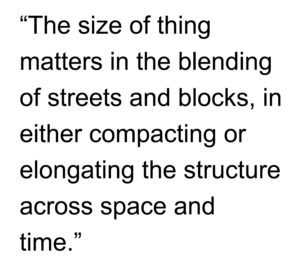 towards its future even as constantly manifested in the present tense: been, being and becoming always.
towards its future even as constantly manifested in the present tense: been, being and becoming always.
What is also revealed in this emergence is the importance of magnitude, a multitude of scales at which the space of the city is used, read, and interpreted by all in movement and occupation of the urban object. Size is seemingly an easy thing to understand, having a quantifiable Cartesian measure. However, it is poorly understood, or worse purposefully ignored. The size of thing matters in the blending of streets and blocks, in either compacting or elongating the structure across space and time. It is a key attribute of the city that embeds the object with certain significations, of time or money, of interaction or seclusion, of the wants of Self or the collective being of the whole. We are revealed in the urban object, our wants and desires, our fears and trepidations, our dogmas and ignorance, of our wondrous beauty and horrific ugliness. The nature of the city is human nature. We build, therefore we were. We arrange, therefore are. We intervene, therefore we will be. The tapestry that emerges denotes of the fabric of human life, characterized by lines of communication, meshes of networks, and patches of community. Only then will we discover that we all dwell in the same neighborhood, we are irrevocably connected, and conflict only emerges from the denial of these basic tenets of existence in the city. We are the tenants and we are the landowners. The portrait painted tells the same story: the city and we are One.
On Space is a regular series of philosophical posts from The Outlaw Urbanist. These short articles (usually about 500 words) are in draft form so ideas, suggestions, thoughts and constructive criticism are welcome.

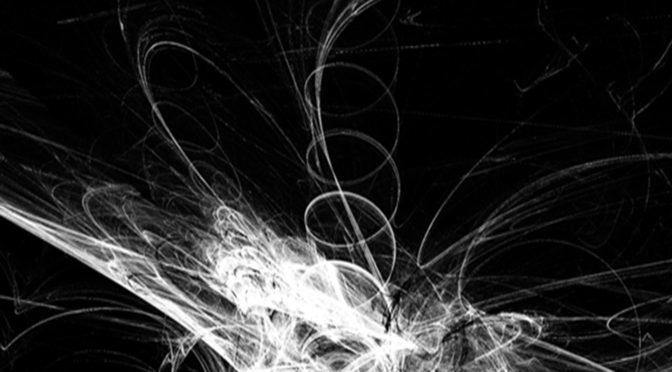

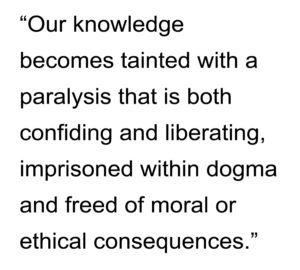 of happenstance and serendipity, of casual encounter, of formal beginnings, and a lifetime of companions to share the journey with us.
of happenstance and serendipity, of casual encounter, of formal beginnings, and a lifetime of companions to share the journey with us.
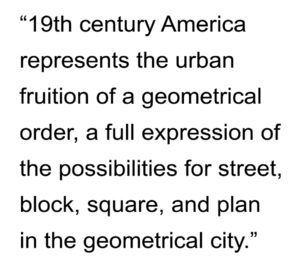 It welcomes and reassures, it is questions with answers, offering solvable riddles to the observant and the observed.
It welcomes and reassures, it is questions with answers, offering solvable riddles to the observant and the observed.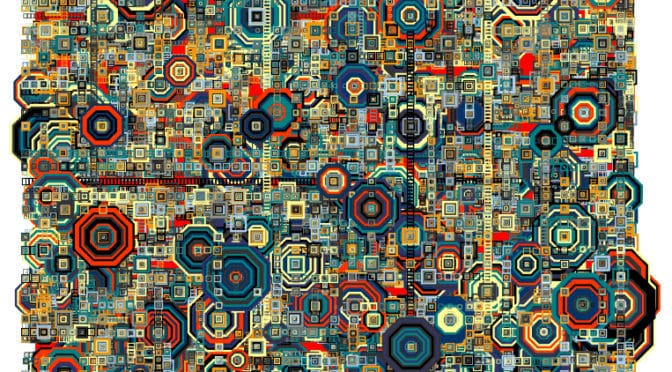
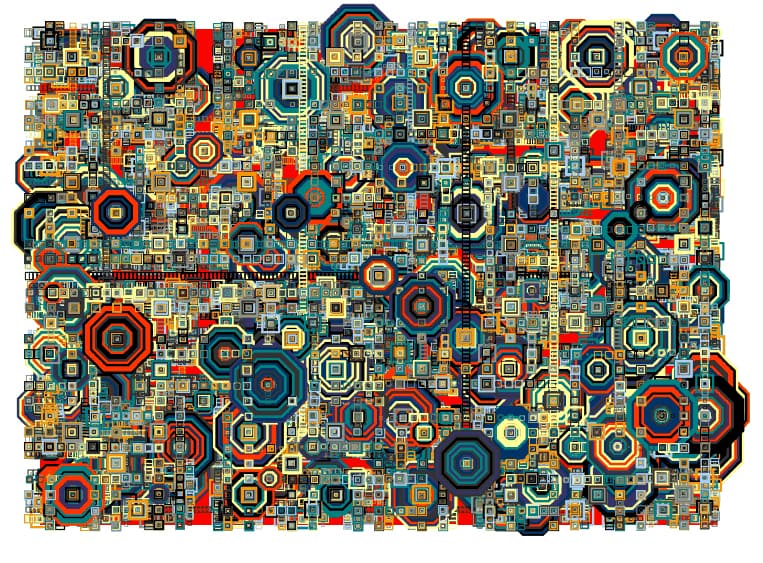
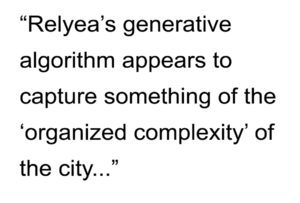 I am not even going to pretend to understand the mathematics of what Relyea is describing, except in only the vaguest sense. I’m sure Dr. Nick “Sheep” Dalton and Dr. Ruth Conroy Dalton would understand the mathematics of Relyea’s generative algorithm, and I will get them to explain it to me the next time I see them. For those interested in the mathematics of the algorithm, there is more information available
I am not even going to pretend to understand the mathematics of what Relyea is describing, except in only the vaguest sense. I’m sure Dr. Nick “Sheep” Dalton and Dr. Ruth Conroy Dalton would understand the mathematics of Relyea’s generative algorithm, and I will get them to explain it to me the next time I see them. For those interested in the mathematics of the algorithm, there is more information available  About Don Relyea
About Don Relyea
 No doubt the reason I found this rant so funny was, having lived in London for 8 years, the thought did cross my mind on more than one occasion that the purpose of the railings along Oxford and Regent Streets (and others) was, indeed, to prevent stupid people from running into traffic and getting killed. Of course, this is not the case. Instead, the purpose of the railings is to corral pedestrians on the sidewalk in areas with high foot traffic (like pigs in a pen) so the majority of street space is reserved for automobile traffic. London’s railings are fundamentally anti-pedestrian, pro-automobile planning measures. God forbid if pedestrians occupy more of the street space for their use to the detriment of keeping traffic moving! So, the real purpose of the railings was to prevent stupid drivers in 5-ton death machines from killing pedestrians, awarding ‘exclusivity’ of street space to these drivers when we should be slowing the traffic down in deference to pedestrians. In the late 1990s, London has begun to learn and adjust to this lesson. When I visit London (hopefully) sometime in the next 4-6 months, I’m eager to see for myself how far they have taken the lesson over the last decade. I like to think Eddie’s satirical rant played a small role in changing the dynamic.
No doubt the reason I found this rant so funny was, having lived in London for 8 years, the thought did cross my mind on more than one occasion that the purpose of the railings along Oxford and Regent Streets (and others) was, indeed, to prevent stupid people from running into traffic and getting killed. Of course, this is not the case. Instead, the purpose of the railings is to corral pedestrians on the sidewalk in areas with high foot traffic (like pigs in a pen) so the majority of street space is reserved for automobile traffic. London’s railings are fundamentally anti-pedestrian, pro-automobile planning measures. God forbid if pedestrians occupy more of the street space for their use to the detriment of keeping traffic moving! So, the real purpose of the railings was to prevent stupid drivers in 5-ton death machines from killing pedestrians, awarding ‘exclusivity’ of street space to these drivers when we should be slowing the traffic down in deference to pedestrians. In the late 1990s, London has begun to learn and adjust to this lesson. When I visit London (hopefully) sometime in the next 4-6 months, I’m eager to see for myself how far they have taken the lesson over the last decade. I like to think Eddie’s satirical rant played a small role in changing the dynamic.